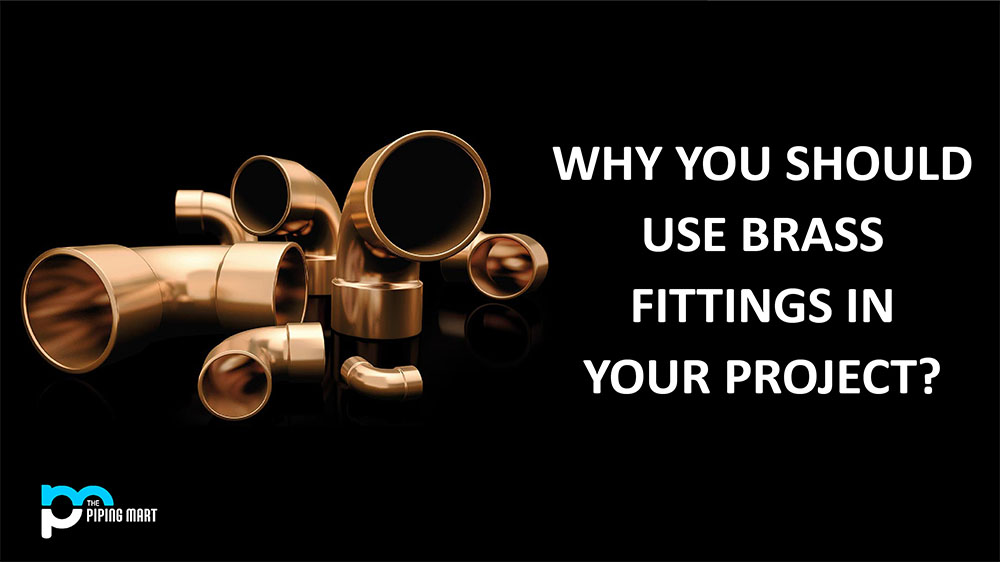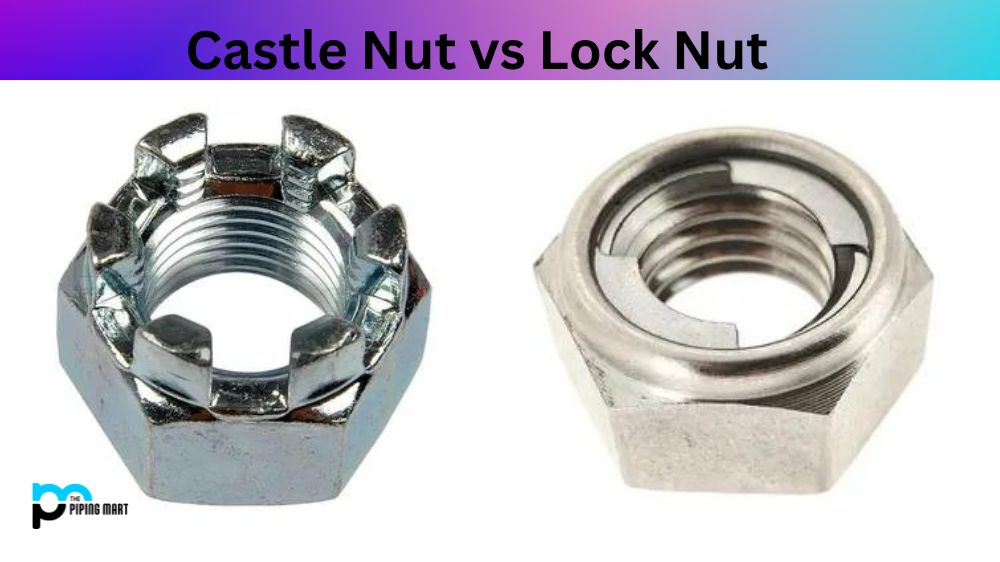What is Brass Fittings?
One of the materials most frequently used to create pipe fittings is brass. Because of the special qualities that make it a viable choice for various tasks, zinc, and copper alloy have been used for millennia. Brass is most frequently used in plumbing pipes and fittings in more recent history and present times. Plumbers and other building professionals commonly select brass pipe fittings due to their adaptability. It is more durable, corrosion-resistant, and flexible when compared to other materials.
Transporting liquids, including slurries, chemicals, flammable gases, and water, is typically done using brass pipe fittings. Brass pipe fittings come in various shapes and thread sizes and can connect, modify, or even control any liquid or gas in pipes. Brass fittings are utilized in several automobile applications in addition to plumbing, such as air brakes, hose ends, and fuel line valves. Compression fittings, refrigerator coolers, and ballcock adapters may all contain brass fittings.
Functions of Brass Fittings
One of the most typical materials utilized to create pipe fittings is brass. Zinc and copper alloys have been used for millennia due to the distinct properties that make them an excellent choice for various uses. Of course, brass is still the material for plumbing pipes and fixtures today. Plumbers and other construction professionals typically utilize brass pipe fittings due to their dynamic properties. It is more robust, more flexible, and corrosion-resistant than other materials.
Transporting liquids, chemicals, flammable gases, slurries, and other plumbing supplies is frequently done with brass pipe fittings. Brass pipe fittings come in various shapes and thread sizes and can join, modify, and control any liquid or gas in pipes. In addition to plumbing, brass fittings are used in various automotive applications, including brakes, hose ends, and fuel line valves. Brass fittings include compression fittings, ballcock adapters, and refrigerator cooler fittings.
What are the benefits of using Brass Fittings?
Many individuals question whether investing in brass fittings for plumbing or waterworks systems is worthwhile, given the variety of options now on the market. Since it has been around for so long, this zinc-copper alloy is widely used in plumbing fixtures and fittings, from small residential buildings to massive industrial complexes. With this metal in plumbing, one can give the plumbing system secure, long-lasting components. If there is a need to figure out how effectively brass will function in the system, here are five fantastic advantages to keep in mind when organizing upcoming projects or extensions.
Broader Adaptability
Because brass serves so many distinct functions, anyone can get the fittings that are needed in various forms, widths, and sizes, with fittings that let the user change pipe size being one among them. Brass performs on a project with highly exacting requirements when there is work going on. Additionally, it increases the effectiveness of the home’s water delivery pipes. Brass is treated in various ways, including lacquered, polished, chrome-plated, nickel-plated, or antiqued, if fittings need to be exposed.
Durability
Brass is a metal that is very durable due to its many other useful qualities. Additionally, it delivers the finest performance possible in hot water supply lines. Brass fittings are a superb option for plumbing systems that need to last for a long time because they don’t break or lose their integrity over time.
Ability to Handle High Temperatures
The best-suited material for hot water distribution systems is brass because it offers high-temperature conductivity and increases the system’s effectiveness. Brass is highly ductile in extreme heat and has a far higher thermal tolerance than alternative materials, making it one of the few to survive a severe home fire.
Corrosion Resistance
Brass is unmatched in its ability to resist corrosion, but other metal fittings may experience significant corrosion problems. A corrosion-free metal is ideal because rust and corrosion can seriously wear down metal fittings. Brass fittings are ideally suited for locations with corrosive water since they don’t rust or corrode in low-pH environments. Brass will not corrode even under the most adverse conditions of the water.
Very malleable
Brass offers considerable malleability for fittings that need to be bent or shaped, making it simpler to modify than steel or iron tubing. More so than most materials on the market, it molds well. If one has ever dealt with a plumbing job that was a bit off, one understands how crucial this attribute can be in lowering labor expenses due to how simple it is to operate. The metal is bendable but has a tonne of sturdiness and dependability. Brass is an excellent material for the plumbing or waterworks system since it can withstand heat and corrosion while offering years of dependable service and high-quality fittings.
How are brass Fittings made?
A brass fitting can be manufactured by forging or extruding bar stock, depending on the application. Round, hexagonal, or shaped bar stock is used to make a fitting that is extruded. These bars started as a solid round billet heated to a malleable state and pressed through a die at a pressure of roughly 80,000 pounds, producing a bar with the correct external dimensions. Then, the bar is machined into suitable parts by cutting it into slugs. During the procedure, a dense, nonporous substance is created.
An extruded circular bar that has been straightened and cut to length is used to create forged fittings. After being straightened, the bars are cut into slugs, much like a fitting made from extruded bar stock, but instead of being machined, the slugs are now reheated to a pliable state and formed into the desired fitting shape by being pressed under about 25,000 pounds of pressure per square inch between an upper and lower die cavity. The forging blank is prepared for machining once the flash, or excess, is removed during cooling. By forming under intense pressure, the forged fittings create a consistently dense material with outstanding strength. The fitting has a high impact strength and is resistant to mechanical shock and vibration because grain flow follows its curve. The visual distinction between a forge and an extruded item is obvious. An extruded part will have squared-off corners that reflect the original bar stock they were made from, while a forging will have rounded edges that are features of the forged shape from the die. Components from both types of manufacture can be combined to make a finished part in the case of brass fittings. Some uses, such as those involving diesel fuel, necessitate corrosion resistance beyond what brass can provide. Due to brass’ excellent plating properties, original brass fittings can be nickel-plated to accommodate fuel systems.
What are the applications of Brass Fittings?
Brass is most frequently used for mechanical and decorative purposes. Brass is commonly used in applications that require a low-friction environment because of its special qualities, which include corrosion resistance. These uses include tools, appliance parts, fittings, fasteners and connections, and ammunition components.
Decorative
Brass is a favorable choice for ornamental applications because of its aesthetic value and antibacterial properties. Its color might range from silver to almost red to pale gold. Since it is aesthetically beautiful and microbial-resistant, brass is frequently used for house dishwashers and lamp fittings.
Mechanical uses
Brass is a material frequently utilized in mechanical applications, from the round casings for the M-16 assault rifle to common bearings and gears. Brass-made tools are renowned for lasting longer and requiring less honing.
Music-related Instruments
Instrument players are probably entirely conscious of the brass around them if they ever played in a concert, marching band, or symphony. The most common brass instruments are trumpets, French horns, trombones, baritones, and tubas.

Pipingmart is B2B portal specializes in industrial, metal and piping products. Also, share latest information and news related to products, materials and different types grades to help business dealing in this industry.




